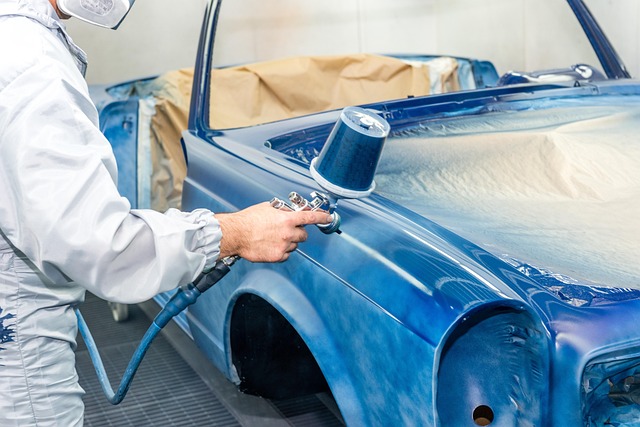Auto Body Repair Reviews: Driving Local Shop Rankings & Customer Trust
Auto body repair reviews are powerful tools that shape local shop rankings and visibility in today&#…….
Welcome to an in-depth exploration of the world of auto body repair reviews—a critical aspect of the automotive industry that ensures vehicles are restored to their pre-incident condition with precision and quality. In today’s fast-paced, safety-conscious world, these reviews play a pivotal role in maintaining vehicle integrity and customer satisfaction. This article aims to guide readers through the intricacies of auto body repair reviews, highlighting their significance, global impact, economic implications, technological innovations, regulatory landscape, challenges, case studies, and future prospects. By delving into these aspects, we hope to provide a comprehensive understanding of this essential process.
Auto body repair reviews are a systematic evaluation process that assesses the quality and effectiveness of vehicle restoration work performed by auto body shops or repair facilities. It involves a detailed examination of various aspects, including structural integrity, paint job precision, panel alignment, and overall cosmetic restoration. The primary goal is to ensure that repairs meet or exceed industry standards, original manufacturer specifications, and customer expectations.
Key components of an auto body repair review include:
The practice of auto body repair reviews has evolved over decades, driven by advancements in vehicle technology and safety standards. Historically, post-World War II, as car ownership surged, so did the need for efficient and reliable repairs. The 1960s and 1970s saw the introduction of stricter safety regulations, influencing repair methods and the importance of thorough reviews.
Today, with vehicles becoming increasingly complex, featuring advanced electronics and lightweight materials, auto body repair reviews are more critical than ever. They ensure that repairs not only restore functionality but also maintain vehicle value, safety, and environmental performance. Moreover, these reviews play a vital role in:
Auto body repair reviews are a global phenomenon, with varying practices and standards across regions. The international influence can be attributed to factors like economic integration, vehicle manufacturing trends, and regional regulatory frameworks. For instance, North America and Western Europe have stringent safety standards, driving the need for meticulous reviews. In contrast, emerging markets may face challenges in implementing consistent review processes due to resource constraints and differing regulatory environments.
| Region | Trends | Examples |
|---|---|---|
| North America | Stricter safety regulations, focus on precision repair | The National Automotive Body Repair Association (NABRA) sets industry standards |
| Western Europe | Emphasis on environmental compliance, advanced training for technicians | Germany’s strict emissions and safety standards require rigorous repairs |
| Asia-Pacific | Rapid adoption of new technologies, cost-effective solutions | Japan’s automotive industry leads in robotic welding and paint technology |
| Latin America | Growing demand for vehicle restoration, traditional methods meet modern needs | Brazil’s auto body shops blend manual craftsmanship with emerging digital tools |
These regional trends shape the global auto body repair landscape, influencing everything from the types of technologies employed to the level of skill required. For instance, Western Europe’s focus on environmental compliance drives the adoption of eco-friendly materials and techniques, while North America’s strict safety standards prompt advancements in structural integrity assessments.
The global auto body repair market was valued at USD 365.7 billion in 2021 and is projected to grow at a CAGR of 4.8% from 2022 to 2030 (Source: Grand View Research). This growth is primarily driven by increasing vehicle ownership, rising demand for vehicle restoration services, and growing awareness of the importance of quality repairs.
The market attracts significant investments from both traditional automotive players and tech startups. Established companies invest in research and development to enhance repair technologies, while startups focus on digital platforms and data-driven solutions to streamline the review process. These investments contribute to:
Auto body repair reviews have a substantial economic impact, influencing:
The digital revolution has significantly impacted auto body repair reviews, introducing technologies that streamline operations, improve accuracy, and enhance customer experiences. Key advancements include:
The future holds even more promise for technological innovations in auto body repair:
Auto body repair reviews are subject to various policies and regulations that vary by region, ensuring ethical practices and consumer protection. Some notable examples include:
Regulatory frameworks play a crucial role in shaping the auto body repair industry:
Despite its importance, auto body repair reviews face several challenges that impact their effectiveness and industry growth:
Addressing these challenges requires a multi-faceted approach:
Japan is renowned for its precision auto body repair techniques, a testament to the country’s commitment to quality and craftsmanship. Japanese shops prioritize customer satisfaction, employing advanced robotic welding and paint technology. They also emphasize pre-and post-repair inspections, ensuring minimal cosmetic imperfections. This focus on detail has made Japan a global leader in vehicle restoration, with its techniques widely studied and adopted internationally.
Lessons Learned:
Germany’s auto body repair industry exemplifies the successful integration of environmental considerations into repair practices. The country’s strict emissions and waste management regulations drive the use of eco-friendly materials, such as water-based paints and recyclable components. German shops also employ efficient recycling methods for scrap materials, minimizing their environmental footprint.
Lessons Learned:
In the United States, auto body shops have embraced digital transformation, leveraging technology to enhance customer experiences and operational efficiency. Online booking platforms and mobile apps allow customers to schedule appointments, receive real-time updates, and pay securely. Additionally, digital imaging and 3D scanning technologies enable remote consultations and precise measurements, reducing on-site visits.
Lessons Learned:
The future of auto body repair reviews holds exciting possibilities, with several growth areas and emerging trends:
To capitalize on these trends, businesses should consider the following strategies:
Auto body repair reviews are an essential pillar of the automotive industry, ensuring vehicles are restored to their optimal state while maintaining safety, value, and environmental sustainability. From historical roots to today’s technological advancements, this field has evolved to meet changing demands. As we look ahead, several trends will shape its future: digital transformation, sustainable practices, AI integration, and remote repair services.
By addressing challenges, adopting new technologies, and embracing strategic innovations, the auto body repair industry can continue to deliver exceptional service, adapt to global standards, and contribute to the overall safety and efficiency of vehicle restoration worldwide. As the industry navigates the future, ongoing collaboration between businesses, regulatory bodies, and technological developers will be crucial in shaping a vibrant, resilient, and environmentally conscious auto body repair landscape.
Q: What is the primary purpose of an auto body repair review?
A: The primary purpose is to assess the quality and safety of vehicle restoration work, ensuring it meets industry standards and customer expectations.
Q: How do regional regulations impact auto body repair practices?
A: Regional regulations govern safety, environmental compliance, consumer protection, and training requirements, influencing the tools, techniques, and technologies used in repairs.
Q: What role does technology play in improving auto body repair reviews?
A: Technology enhances precision, efficiency, and customer engagement. Digital tools, CAD software, robotic welding, and AI analytics improve review processes and outcomes.
Q: How can auto body shops attract and retain skilled technicians?
A: Shops can invest in comprehensive training programs, offer competitive salaries and benefits, and foster a culture of continuous learning to attract and retain skilled workers.
Q: What are the environmental benefits of sustainable repair practices?
A: Sustainable practices reduce waste, minimize emissions, conserve resources, and promote recycling, contributing to a greener automotive industry.

Auto body repair reviews are powerful tools that shape local shop rankings and visibility in today&#…….

New car owners face a challenge understanding auto body repair, but auto body repair reviews serve a…….

When reviewing auto body repair services, discern quality feedback from biased opinions by focusing…….

Authentic auto body repair reviews are crucial for evaluating service quality. While anonymous feedb…….

A positive auto body repair experience, as indicated by 5-star reviews, depends on expert craftsmans…….